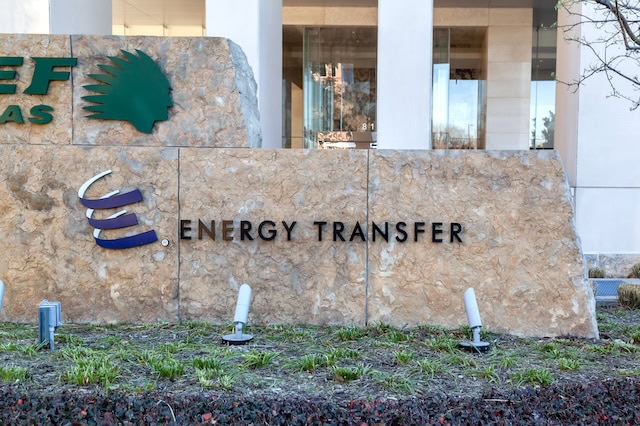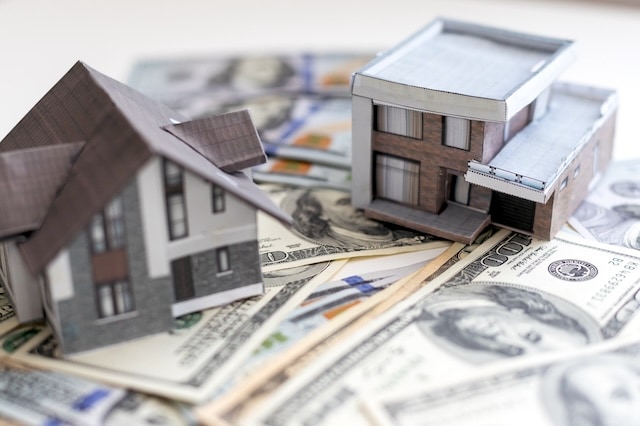It’s difficult to resist the charm of high-yield dividend stocks. Their ability to generate outsized amounts of cash makes them the stuff of dreams for those living on a fixed income—as well as for any investors who simply want a little performance ballast during periods of rough stock-price returns.
But if you simply target the fattest dividend yields and call it a day, you’re in for a rude awakening.
There’s a reason risk is so often mentioned alongside reward. A stock offering several times more yield than the market average might very well be the undiscovered can’t-miss stock pick of the year … or it might be flashing a signal that many investors have passed it up for a reason. And sure, a very high yield can help make up for some underperformance in the stock price—but only if the dividend continues to be paid. Some high-dividend stocks have unsustainable payouts that are just an earnings miss or economic downturn away from collapse.
I’m not saying you should run screaming from any stock that offers an outsized payday. I’m just saying you shouldn’t buy them on yield alone. Quality matters, too.
Today, I’ll examine a group of high-yield dividend stocks that are showing more signs of fundamental quality than most. Not only do they deliver much sweeter yields than your average stock, but they also have the confidence of Wall Street’s analyst community.
Disclaimer: This article does not constitute individualized investment advice. Securities, funds, and/or other investments appear for your consideration and not as personalized investment recommendations. Act at your own discretion.
Featured Financial Products
Dividend Yields (And Dividend Safety)
Dividend yield is a simple calculation—annual dividend / price x 100—that can mean a world of difference for investors, especially those reliant on income.
Consider this. Let’s say you have a $1 million nest egg heading into retirement. If your portfolio yields 3%, you’ll collect $30,000 in dividend and interest income each year. If it yields 6%, though, you’ll collect $60,000—a dramatically higher number that would change your retirement calculus.
But dividend yields can be deceiving. You see, a company can get a very high annual dividend yield in two very different ways: the dividend growing very rapidly, or the share price falling very quickly.
For example, Alpha Corp., which trades for $100 per share, pays a 50¢-per-share quarterly dividend, or $2 across the whole year. It yields 2.0%. In a month, however, it yields 4.0%. Here are two ways that could have happened:
- Alpha Corp. doubled its dividend to $1.00 per share quarterly, good for a $4-per-share annual dividend. The share price stays the same. ($4 / $100 x 100 = 4.0%)
- Alpha Corp. kept its dividend at 50¢ quarterly ($2 annually), but its share price plunged in half to $50 per share. ($2 / $50 x 100 = 4.0%)
To be fair, a company’s stock can plunge even if its financial situation is good; markets can sometimes be irrational. But very broadly speaking, if you’re comparing a company that just doubled its dividend to another company whose shares have been cut in half, you’d expect the former’s dividend health to be better.
That’s why you should always be mindful of dividend safety, but especially when it comes to high-yield dividend stocks. That’s because oftentimes, the dividend is a more significant contributor to returns than price, so any danger to the dividend could undermine your investment thesis.
So, that’s your goal: Determine whether the high-dividend stocks you buy are financially stable and can generate substantial profits and cash, which is how the dividend gets paid. Among other things, you’ll want to look at payout ratio, which determines what percentage of a company’s profits, distributable cash flow, and other financial metrics (depending on the type of stock) are being used to finance the dividend. Generally speaking, the lower the payout ratio, the more sustainable the payout.
Related: Direct Indexing: A (Tax-) Smarter Way to Index Your Investments
7 Highly Rated High-Yield Dividend Stocks
Today, I’m going to look at several high-dividend stocks yielding at least 5%—a level that’s more than four times what the S&P 500 offers currently, and that’s well above most traditional high-dividend ETFs. Actually, several of these stocks yield much more than 5% … resulting in an average dividend yield of 9.7% across this list!
Every stock on this list also has a favorable view from Wall Street’s analyst community. The consensus analyst rating, courtesy of S&P Global Market Intelligence, is the average of all known analyst ratings of the stock, boiled down to a numerical system where …
- Less than 1.5 = Strong Buy
- 1.5-2.5 = Buy
- 2.5-3.5 = Hold
- 3.5-4.5 = Sell
- More than 4.5 = Strong Sell
In short, the lower the number, the better the overall consensus view on the stock. In the case of this list, I’ve included only stocks that have received a 2 or lower—in other words, clear-cut Buys in the analysts’ eyes.
Importantly: These are the best dividend stocks among companies that pay pretty high yields, but that doesn’t make any pick here a no-brainer slam dunk. They all have a blemish or two—whether it’s significant stock weakness of late, interest-rate risk, tight dividend coverage, or something else—but to the pros, at least, their high yields, relative value, and/or growth potential make the risk worth taking. So if you’re going to jump into high-yield investing, just make sure you do so with your eyes wide open.
The equities here are listed in reverse order of dividend yield, from the lowest-paying stock to the highest.
High-Yield Dividend Stock #7: Brookfield Infrastructure Partners LP

- Industry: Utilities and infrastructure
- Market capitalization: $16.0 billion
- Distribution yield: 5.0%*
- Consensus analyst rating: 1.58 (Buy)
Brookfield Infrastructure Partners LP (BIP) is a wide-ranging conglomerate of infrastructure spread across four continents. Its primary divisions include:
- Utilities: 83,700 kilometers of electricity transmission lines, 4,500 kilometers of natural gas pipelines, 8.6 million electricity and nat-gas connections, and more
- Transport: 36,300 kilometers of rail, 3,200 kilometers of toll roads, 13 terminals and export facilities, and more
- Midstream: 19,500 kilometers of gathering, transmission, and transportation pipelines, 280 billion cubic feet (bcf) of natural gas storage, and 16 natural gas liquids processing facilities
- Data: 312,000-plus telecom towers, 28,000 kilometers of fiber optic cable, more than 100 data centers, and more
Infrastructure companies are tightly tethered to interest rates, which determines their cost of debt. Unsurprisingly, then, BIP has been whipped around over the past few years as the Federal Reserve has raised and then cut its target benchmark rate. But analysts remain overwhelmingly positive on the stock going forward—right now, 10 pros say it’s a Buy, versus two Holds and no Sells.
“We expect [foreign exchange]-related headwinds to moderate and potentially become a tailwind in 2026, which should improve visibility into the underlying double-digit FFO/unit growth,” says BMO Capital Markets Industrials Analyst Devin Dodge, who calls BIP a “preferred idea” and rates units at Outperform. “Layering in momentum in transaction activity, an attractive yield and a valuation multiple below its historical levels, we believe the units offer a compelling risk/reward.”
Another reason for optimism among income investors: The company raised its payout by 6% in February 2025, to 43¢ per unit—good for a yield north of 5% at current prices. That puts its payout ratio around 67%, which is within its long-term target range.
You’ll probably notice that I’ve been referring to “units.” That’s because BIP is a master limited partnership (MLP), which trades like a stock but is internally organized differently. It also uses a few different terms. For instance, shares are “units,” and it pays a dividend-esque “distribution” that can be something of a hassle from a taxation standpoint, especially for novices. However, Brookfield is a rare bird in that it offers a way around this: Brookfield Infrastructure Corporation (BIPC) shares, which pay the qualified dividends you’re used to from normal stocks.
* Distribution yield is calculated by annualizing the most recent distribution and dividing by unit price. Distributions are like dividends, but they are treated as tax-deferred returns of capital and require different tax paperwork.
Do you want to get serious about saving and planning for retirement? Sign up for Retire With Riley, Young and the Invested’s free retirement planning newsletter.
Related: How to Choose a Financial Advisor
High-Yield Dividend Stock #6: Energy Transfer LP

- Industry: Energy midstream
- Market capitalization: $57.4 billion
- Distribution yield: 8.0%
- Consensus analyst rating: 1.39 (Strong Buy)
Another high-yielding energy infrastructure play is Energy Transfer LP (ET), one of the continent’s largest midstream energy firms. The Dallas-based MLP’s assets include roughly 140,000 miles of energy pipelines and other infrastructure across 44 states, responsible for transporting and storing crude oil, natural gas, NGLs, and refined products. Its additional assets include Lake Charles LNG Company, a 21% stake in Sunoco LP (SUN), and a 38% stake in USA Compression Partners LP (USAC).
Energy Transfer has walloped the broader energy-infrastructure industry since the COVID bear-market bottom, delivering a total return of about 470% versus the MLP benchmark’s 360%.
“Over the last several years, ET has focused on reducing debt while finishing a campaign of large capital investments,” say Stifel analysts, who rate the stock at Buy. “With the upturn in the commodity environment and production on the rise across the U.S., Energy Transfer is poised to generate significant free cash flow. We believe investors will be well served by owning ET as demand for U.S. energy increases around the globe.”
Especially promising is ET’s positioning to meet growing demand for natural gas to generate electricity for data centers.
“ET continues to see countless opportunities across its vast footprint and noted it is in talks to serve incremental data centers,” Stifel’s analysts write. “Additionally, ET is seeing growth opportunity across its natural gas-centric footprint (Hugh Brinson, Desert Southwest, Lake Charles and gas storage) and NGL business (processing, pipeline and fractionation).”
This promise has 17 of ET’s 18 covering analysts in the Buy camp. The one dissenter is a Hold.
As for the distribution? For those who don’t remember, Energy Transfer chopped its payout in half in 2020 during the depths of COVID. However, it started a quarterly dividend growth streak in 2022—one that has persisted even after it surpassed post-COVID distribution levels in late 2023.
Energy Transfer says it’s committed to growing the distribution even more going forward, though it’s taking an understandably cautious approach, targeting 3% to 5% annual growth. Distribution coverage is plenty adequate; estimates for distributable cash flow are just a little less than twice what it needs to afford its payout.
Related: 15 Best Investing Research & Stock Analysis Websites
High-Yield Dividend Stock #5: Rithm Capital

- Industry: Mortgage REIT and alternative asset management
- Market capitalization: $5.8 billion
- Dividend yield: 9.2%
- Consensus analyst rating: 1.44 (Strong Buy)
Most real estate investment trusts (REITs) that you read about tend to be “equity REITs,” which deal in physical real estate. Specifically, they own (and sometimes operate or manage) properties, whether that’s apartments, office buildings, hotels, warehouses, you name it.
But “mortgage REITs” deal in paper real estate. That typically takes the form of residential and/or commercial mortgages, as well as mortgage-backed securities (MBSes). An mREIT will borrow money at short-term interest rates. It will take that money and buy mortgages, MBSes, and/or other mortgage-related securities. It will then earn income from the interest generated by these products—and use much of this profit to pay dividends to its shareholders. In fact, mREITs tend to have higher dividend yields than their traditional real estate cousins.
Rithm Capital (RITM) is technically a mortgage REIT, though it looks much different than the other mREITs that appear later in this list.
This “hybrid” mREIT has numerous businesses, including alternative asset management. RITM invests in residential mortgages loans, consumer loans, single-family rentals, mortgage servicing rights (MSRs), residential transitional loans, secured lending and structured products, and commercial real estate.
It’s an utterly transformed company from just a few years ago. Per Argus Research:
“The company has transformed its business model since the financing crisis in late March 2020. It continues to grow its mortgage servicing business while also taking advantage of new debt-related investment opportunities. RITM has acquired a 50% stake in GreenBarn Investment Group, a commercial real estate equity and debt investment management firm, purchased $1.4 billion of Marcus consumer loans from Goldman Sachs for $145 million, and completed the acquisition of Computershare Mortgage Services Inc. and certain affiliated companies, including Specialized Loan Servicing LLC (SLS) for approximately $720 million. Its acquisition of $33 billion alternative asset manager Sculptor Capital Management was completed in 4Q23.”
The pros love the new-look RITM. Currently, every one of the nine analysts covering the stock call it a Buy.
“The outlook for 2025 and 2026 includes a possible partial spin-off of Newrez, the in-process precedent of Rocket’s (RKT, Not Rated) proposed acquisition of Mr. Cooper (COOP, Not Rated), and most recently Guild Holdings (GHLD, Not Rated) take-private offer from Bayview Asset Management (Private), which should support a higher multiple and could start the process of a C-corp reorganization,” says B. Riley analyst Randy Binner, who recently reiterated his Buy rating. “We believe a higher valuation for the RITM complex will come into focus for investors.”
The firm is also bullish about Rithm’s ability to afford its 9%-plus payout, which puts RITM among the highest-paying dividend stocks on our list.
Featured Financial Products
Related: How to Retire Without Investing in the Stock Market
High-Yield Dividend Stock #4: Sixth Street Specialty Lending

- Industry: BDC
- Market capitalization: $2.1 billion
- Dividend yield: 9.4%*
- Consensus analyst rating: 1.73 (Buy)
Sixth Street Specialty Lending (TSLX) belongs to another high-yielding acronym industry: business development companies (BDCs).
Fun fact: Congress is actually responsible for the creation of real estate investment trusts, which were brought to life in 1960 with a mandate to return at least 90% of their taxable income back to shareholders as dividends (in exchange for favorable tax treatment). Well, 20 years later, in the hopes of spurring investment in smaller businesses, Congress went back to the same playbook and created BDCs—with the same dividend mandate.
Sixth Street Specialty Lending provides financing to middle-market companies primarily through senior secured loans, though also occasionally mezzanine loans, unsecured loans, bonds, and equity. Importantly, 97% of the company’s debt investments are floating-rate in nature, meaning that their rates shift alongside benchmark interest rates.
TSLX is somewhat conservative compared to other BDCs; historically, it has held only 5% to 15% of its investments (by fair value) in cyclical companies. Currently, it has 115 portfolio companies across internet services, retail, consumer products, business services, and about a dozen other industries. Moreover, no holding makes up more than 3% of the portfolio by fair value.
“Because TSLX is a relatively small vehicle managed under the large Sixth Street Partners platform ($70+ billion), it can be nimble, flexible, and creative in providing compelling credit solutions to borrowers, but also has the size, scale, and resources of a large credit platform. This has contributed to TSLX’s originating very attractive investments and generating one of the highest returns in the BDC sector,” say Keefe, Bruyette & Woods analysts, who are among the nine firms with Buy-equivalent calls on the stock, versus two Holds and no Sells. “We view TSLX’s management team as one of the best in the sector, which has been proven by their ability to generate significant value and very high returns through many different economic environments.”
* Sixth Street Specialty Lending’s yield may include variable supplemental dividends. The yield on TSLX’s regular quarterly dividend is 8.4% as of this writing.
Related: 8 Best Dividend ETFs to Buy for Diversified Income
High-Yield Dividend Stock #3: Franklin BSP Realty Trust

- Industry: Mortgage REIT
- Market capitalization: $880.8 million
- Dividend yield: 13.2%
- Consensus analyst rating: 1.25 (Strong Buy)
Franklin BSP Realty Trust (FBRT), another mortgage REIT, predominantly invests in commercial mortgage-backed securities with a focus on the southern U.S.
The majority (~75%) of its loans are tied up in multifamily real estate, with the rest spread across hospitality, industrial, office, and other industries. And its financing largely comes from collateralized loan obligations (CLOs), but its debt mix also includes warehouse lending and repurchase agreements, among others.
And in July, Franklin BSP Realty Trust closed on its $425 million acquisition of NewPoint Holdings JV LLC, which adds a mortgage servicing business to FBRT’s core origination operations.
FBRT ranks among the best high-yield dividend stocks you can buy right now, but it’s also a great example of how investing in even the most favored mREITs can make you feel like you’re living life on the edge.
Case in point? Franklin BSP Realty Trust currently pays 35.5¢ per share quarterly—a number that hasn’t budged since 2022—which comes out to $1.42 per share for the year. B. Riley recently upgraded its models to reflect the NewPoint acquisition, and it believes the company will generate $1.40 per share of distributable earnings per share (EPS) in fiscal 2026 … but that the company will be covering the dividend with earnings by the second half of the year.
That’s awfully close for comfort, but Wall Street seems completely unconcerned by it. All five research outfits that cover FBRT, including B. Riley, call it a Buy.
Says B. Riley’s Randy Binner: “Our overall view remains that FBRT is staying ahead of credit issues, and we believe the origination growth and integration of the NewPoint transaction will be the focus in 2H25.”
Related: 5 Best Fidelity Retirement Funds [Low-Cost + Long-Term]
Best Monthly Dividend Stock #2: Trinity Capital

- Industry: BDC
- Market capitalization: $1.0 billion
- Dividend yield: 13.7%
- Consensus analyst rating: 1.75 (Strong Buy)
Trinity Capital (TRIN), another BDC, is an alternative asset manager that focuses on five specific business verticals: technology lending, equipment financing, life sciences, asset-based lending, and sponsor finance.
Loans make up the majority (75%) of the portfolio by investment type, with a roughly 80/20 split between floating- and fixed-rate. Another 17% is made up of equipment financings, and the rest is equity and warrants. Its 163 portfolio companies include the likes of space-and-satellite firm Slingshot Aerospace, nonalcoholic brewer Athletic Brewing, and cardiac monitoring company VitalConnect.
B. Riley Securities analyst Sean-Paul Adams recently maintained his Buy rating and increased his price target (from $16 per share to $17), citing the company’s investment-grade rating from Moody’s, SBIC fund approval, record origination levels and increased equipment finance vertical demand. “TRIN’s strong yield preservation, continued momentum in originations and RIA platform growth opportunities provide meaningful upside potential in the near term, in our view,” he adds.
Adams is one of six Buy-equivalent ratings on the stock, opposed by just one Hold and one Sell.
Trinity’s sky-high dividend yield (currently well north of 13%) is blunted a little bit by a lack of payout growth. The company came public in early 2021, and raised its dividend on a quarterly basis through the end of 2023, but it has kept that distribution level ever since. Still, 13%-plus is more than enough to put Trinity among the best high-yield dividend stocks to buy now.
Featured Financial Products
Related: Don’t Make These 7 Mistakes When Choosing a Financial Advisor
High-Yield Dividend Stock #1: Dynex Capital

- Industry: Mortgage REIT
- Market capitalization: $1.9 billion
- Dividend yield: 15.3%
- Consensus analyst rating: 1.83 (Buy)
Dynex Capital (DX) is the longest-tenured mREIT, founded in 1987. And it’s explicitly an “agency” mREIT, which means it deals in mortgages and MBSes from government agencies such as Freddie Mac and Fannie Mae. In fact, its portfolio is 97% agency residential MBSes (RMBSes), and most of the remainder is agency commercial MBSes (CMBSes).
Keefe, Bruyette and Woods, whose analysts rate Dynex at Outperform, is broadly bullish on agency MBS sectors.
“Agency MBS spreads remain close to historical wides, which should support low- to mid-teen returns on incremental investments,” KBW analysts say. “We believe that companies are well-positioned to capitalize on the attractive investing environment given the low leverage across the sector. Additionally, given the uncertainty in the equity and debt markets, we think double-digit returns from the agency MBS REITs appear compelling and could outperform the financial sector.”
And about DX specifically, KBW adds that “we expect valuation to trend up as market cap increases, which should continue as the company issues equity accretively (the company issued $245 million of net equity in 3Q).”
KBW is just one of a handful of analyst outfits that cover Dynex, which is typical for the mREIT industry. Still, among these few pros, the bulls are the majority—DX has four Buys versus two Holds and no Sells.
Dynex pays a monthly dividend, and a generous one at that—more than 16% as I write this. However, mortgage REITs tend to have shakier dividend histories than traditional stocks and even equity REITs, and DX is no exception. Its dividend was hacked away by 85% between 2012 and 2020, to 13¢ per share monthly. But things are looking up recently: The company finally raised its dividend in mid-2024, to 15¢, then again in Feburary 2025, to 17¢.
Still, that payout history is an important reminder that double-digit yields are hardly risk-free.
Want to talk more about your financial goals or concerns? Our services include comprehensive financial planning, investment management, estate planning, taxes, and more! Schedule a call with Riley to discuss what you need, and what we can do for you.
Related: The 15 Best ETFs to Buy for a Prosperous 2025
If You’re Still Looking for High Yields, Consider Short-Term Alternative Investments
Alternative investments is a catch-all term for any investment that doesn’t fall into the categories of stocks, bonds, or cash. It covers a wide variety of investments, from real estate to fine art to sneakers, and it has become increasingly popular as fintech services have opened up once-restrictive markets to the individual retail investor.
Often, because of the less transparent nature of these investments, they’re limited toward investors with more financial resources and understanding, namely accredited investors. These investors meet certain financial requirements (or qualify with recognized credentials) and can gain access to investments that can offer compelling risk-reward characteristics.
Below, we highlight a few options that can also deliver high yields:
EquityMultiple’s Alpine Notes (Accredited investors only)
EquityMultiple’s Alpine Notes are a savings alternative with competitive rates of return on three-, six-, and nine-month notes, providing another means of conservative diversification and short-term yield. Compared to the commercial real estate crowdfunding platform’s other investment offerings, these notes are extremely short-term in nature, and thus an optimal choice for EquityMultiple users who want better liquidity.
- EquityMultiple offers a yield-focused alternative to savings that bear contractual fixed annual interest rates of 6.00%, 7.05% or 7.4% (all of which are higher than rates currently offered by leading high-yield savings accounts and CDs).*
- The savings-like product offers reasonable levels of liquidity, carrying the option to redeem early to invest into other offerings after holding the note for 30 days.
- Interest accrues and compounds on a monthly basis, enhancing the effective annualized rate of return.
- High rates of return
- No fees on investment
- Ability to withdraw funds for other offerings after 30 days
- EquityMultiple assumes "first-loss position," providing skin-in-the-game alongside other investors
- Only available to accredited investors
- Not FDIC-insured, nor are returns guaranteed
Percent private credit (Accredited investors only)
Percent has built a way for retail accredited investors to access a wide range of private credit opportunities with a clear view into their performance through its innovative tools and comprehensive market data. That allows investors to make better-informed decisions, source and compare opportunities, and monitor performance with ease. This platform also provides access to an alternative investment that’s a little more liquid than other alts, with some debt investments only lasting nine months, with liquidity available after the very first month in some cases.
The service targets annualized returns on unsecured notes between 12% to 18% on average and up to 20%. And while investment minimums vary, many Percent opportunities require only $500 to invest.
- Access for accredited investors to private credit markets, which historically have been limited to institutional investors
- Shorter-term investments, with many durations between 9 months to several years, and liquidity available after the first month, if the borrower provides this option
- Lower minimums (most deals requiring only $500 to invest)
- Diversification, with access to small business lending in Latin America, U.S. litigation finance, Canadian residential mortgages, merchant cash advances, and more
- Uncorrelated returns with the stock market and a potential hedge on stock market volatility
- Greater liquidity than many alternative investments
- Low investment minimums
- Low stock market correlations
- Only accessible to accredited investors
First National Realty Partners (Accredited investors only)
First National Realty Partners (FNRP) is one of the fastest-growing vertically integrated commercial real estate investment firms in the United States. It’s also focused on a very particular niche: grocery-anchored commercial real estate.
FNRP’s team leverages relationships with top-tier national-brand tenants—including Kroger, Walmart, Aldi, Target, and Whole Foods—to provide investors with access to institutional-quality CRE deals both on- and off-market. FNRP offers private placements that only an accredited investor can access.
- FNRP is the leading sponsor for grocery-anchored commercial real estate.
- FNRP has a nationwide focus and leverages relationships with the best national-brand tenants to bring accredited investors exclusive access to institutional-quality deals.
- FNRP provides partners with institutional-quality investments that achieve exceptional, risk-adjusted returns (12%-18% targeted average annual returns, of which, 8% is the targeted average annual cash distribution.)
- Uses the Dragnet Acquisitions Model - strong due diligence. FNRP looks at 1,000 deals and chooses just one. FNRP chooses only the best deals they believe offer the highest return for the absolute lowest risk.
- FNRP's entire investment cycle is 100% in-house and not outsourced like traditional private equity sponsors.
- Strong performance track record
- Unique investment niche (grocery-anchored CRE)
- High total shareholder return
- Only accessible to accredited investors
- High investment minimum ($50,000)








![The 10 Best Dividend ETFs [Get Income + Diversify] 24 a pair of hands fan out a bunch of old and new hundred dollar bills.](https://youngandtheinvested.com/wp-content/uploads/dividends-cash-fan-blue-1200-600x403.jpg)


